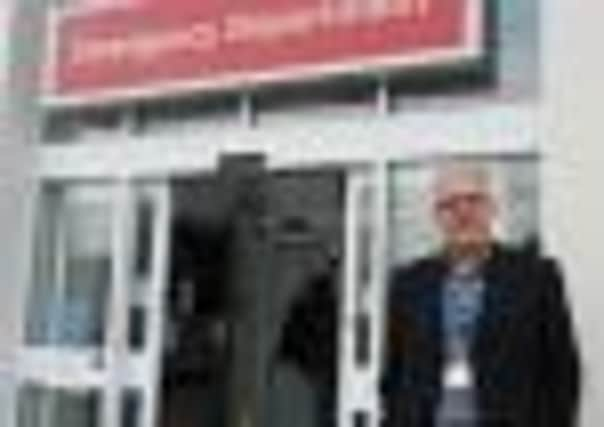‘Too many elderly people in A&E’


Councillors, social workers and healthcare professionals raised their concerns last week at the West Sussex County Council Health and Adult Social Care Select Committee (HASC) while praising East Surrey Hospital for the vast improvements made there under the leadership of chief executive of the Surrey and Sussex Healthcare NHS Trust Michael Wilson.
He said that, as the busiest ‘blue light hospital’ in the South East, East Surrey Hospital at Redhill receives 95 to 100 emergency ambulances every day, but a third of those patients need not be there.
Advertisement
Hide AdAdvertisement
Hide AdThe committee heard from a county council officer that some elderly people are admitted to A&E from care homes because one of the ways to rate care homes is based on how many deaths there have been there.
She said: “We are working with care homes to support them and the ambulance trust. There’s a range of reasons why care homes don’t want people to die in their care home. There are reputational reasons, but dying in the back of an ambulance or in hospital is not a choice.”
Addressing Mr Wilson, Sue Knight (LDem, Burgess Hill East) said: “I am concerned about the number of ambulances you get at your hospital. There are far too many and those who don’t need to be there.
“It’s about all of us changing our attitude and looking after people in their own homes. Why send them to hospital?”
Advertisement
Hide AdAdvertisement
Hide AdBrenda Smith (Lab, Langley Green and West Green) asked whether the ambulances could go elsewhere, particularly in relation to elderly people with dementia.
Mr Wilson said: “We get so many ambulances because of the geography. A third of those coming in needn’t come in by ambulance. There’s a bit of patient education we need to do together.
“It’s not the right environment for a patient with dementia. We should be setting ourselves up for the future to be dementia hospitals and to find new ways of looking after patients.”
Last week (January 21-27) the South East Coast Ambulance Service (SECAmb) responded to about 15,200 calls of which 12,000 received a physical response from a clinician and 8,000 were taken to hospital. Some 1,500 people received advice over the phone enabling clinicians to attend more serious calls.
Advertisement
Hide AdAdvertisement
Hide AdAfter the meeting a spokesman said: “Where necessary clinicians are immediately sent to the scene of the call. Where appropriate the call can also be dealt with by clinicians based in our Emergency Operations Centres. When an ambulance is not required these clinicians can provide advice to the caller if necessary direct them to a more appropriate service elsewhere in the NHS.
“Where possible SECAmb looks to treat patients without the need for additional hospital treatment. On arrival at the scene of a 999 call, our staff are trained to expertly assess and treat patients and decide whether an onward trip to hospital is required or whether they can be treated without the need for a trip to A&E.”
The Trust also uses paramedic practitioners, who are trained to diagnose and treat minor injuries and illnesses at the scene or signpost care to other specialists, such as GPs, community nurses, social care or hospital specialists.